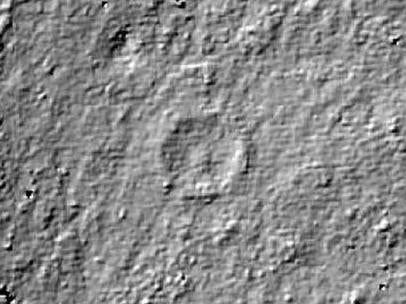Hidden 4,000-year-old monument discovered in Forest of Dean
Archaeologist Jon Hoyle finds ring cairn following laser scan of woodland in Gloucestershire
Your support helps us to tell the story
From reproductive rights to climate change to Big Tech, The Independent is on the ground when the story is developing. Whether it's investigating the financials of Elon Musk's pro-Trump PAC or producing our latest documentary, 'The A Word', which shines a light on the American women fighting for reproductive rights, we know how important it is to parse out the facts from the messaging.
At such a critical moment in US history, we need reporters on the ground. Your donation allows us to keep sending journalists to speak to both sides of the story.
The Independent is trusted by Americans across the entire political spectrum. And unlike many other quality news outlets, we choose not to lock Americans out of our reporting and analysis with paywalls. We believe quality journalism should be available to everyone, paid for by those who can afford it.
Your support makes all the difference.A 4,000-year-old ritual monument has been discovered hidden in the Forest of Dean.
The Bronze Age ring cairn is made up of ten small standing stones on top of a raised bank in a woodland enclosure near Tidenham in Gloucestershire.
It is believed to be the only site of its type in the area, according to Jon Hoyle, an archaeologist working for the county council.
He first spotted the ring when examining the results of a survey of the forest using an airborne laser scan in 2006.
The technique uses a computer algorithm to strip away the trees and vegetation covering the forest floor to create a 3D impression of the surface.
It revealed a 25-metre-wide raised circle around a seven-metre-wide central mound, which Mr Hoyle initially thought may have been a gun emplacement from World War Two.
However, when he went to see the area for himself in 2010, he realised it could date back to around 2,000BC.

Of particular interest were the one-metre-high standing stones protruding from the ring, consistent with early or middle Bronze Age ring cairns found in Wales.
“Exactly how ritual sites like this were used is very difficult to say,” Mr Hoyle told The Independent. “Ring cairns may have been associated with rituals involving burning and charcoal.
“There was also evidence of a number of small pits, which may represent burials or cremations. A tiny fragment of burnt bone was found during the excavation, but without further investigation this can’t be clarified.”
The same survey also uncovered more than 100 possible burial mounds which have not yet been properly investigated.
Another Bronze Age monument, a round cairn burial mound made up of limestone slabs, was found in nearby Tidenham Chase in the 1960s.
Mr Hoyle, who published details of his discovery in a book for Historic England, Hidden Landscapes of the Forest of Dean, last month, said the priority now was to ensure the preservation of the monument.

Join our commenting forum
Join thought-provoking conversations, follow other Independent readers and see their replies
Comments